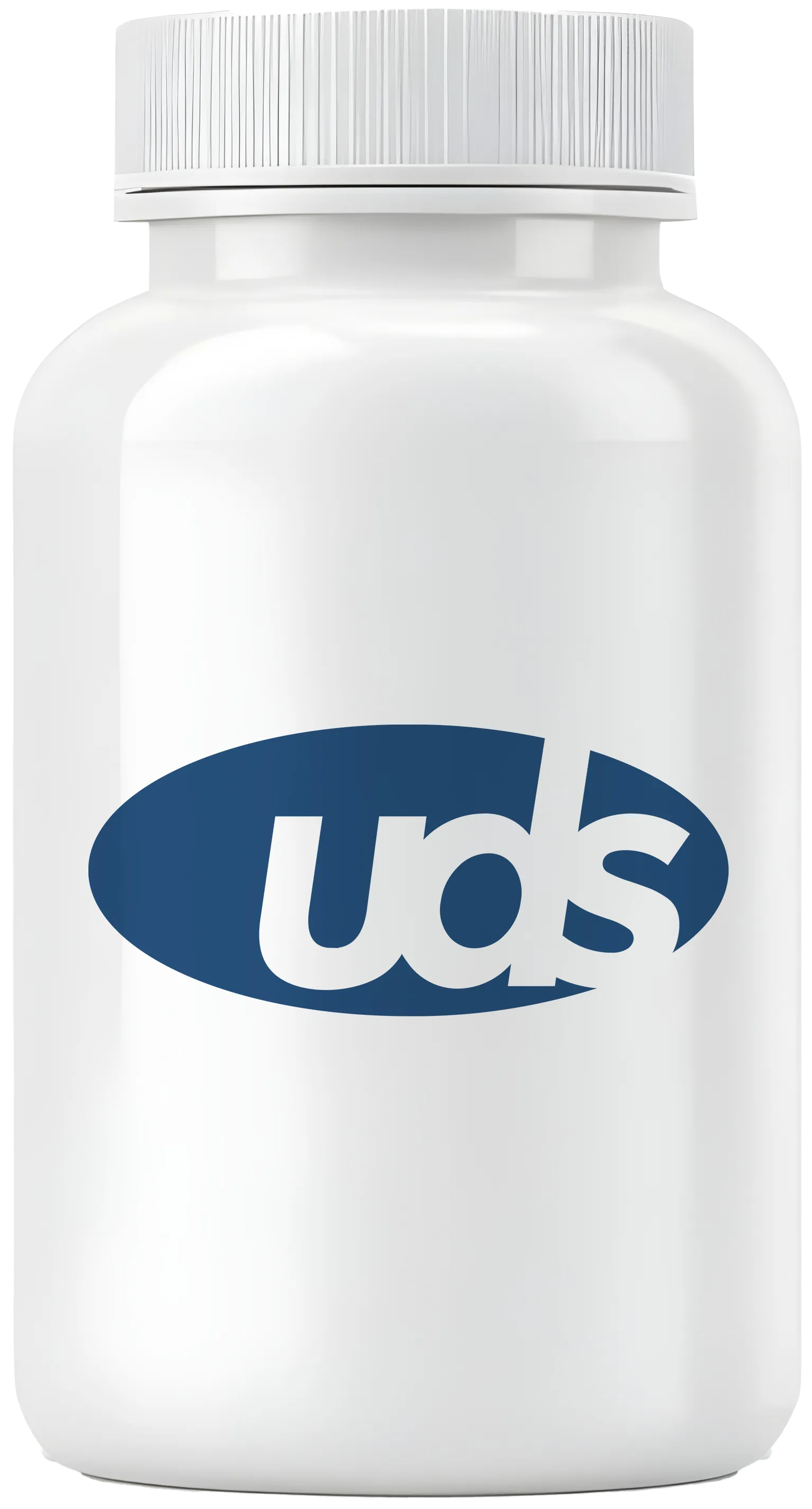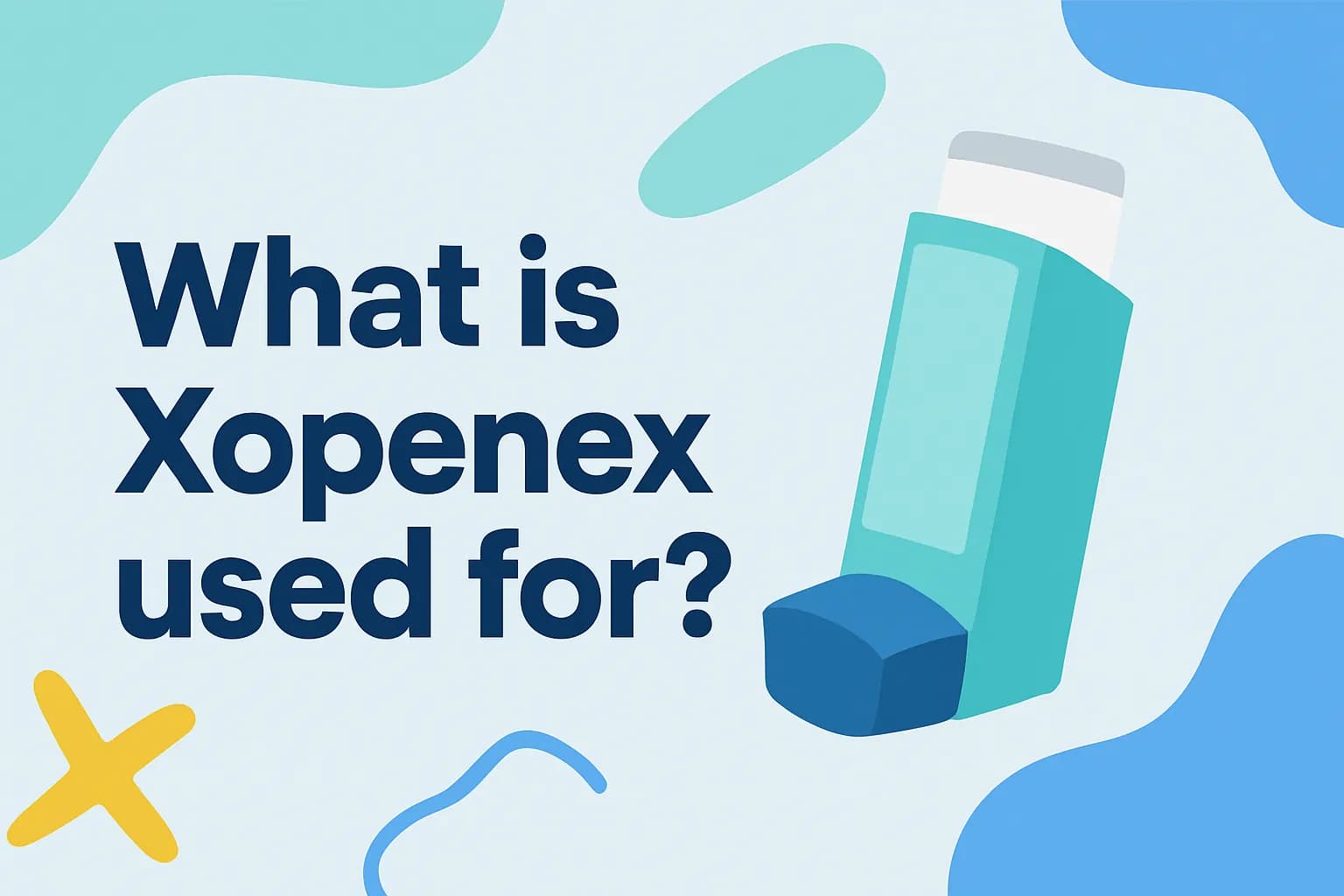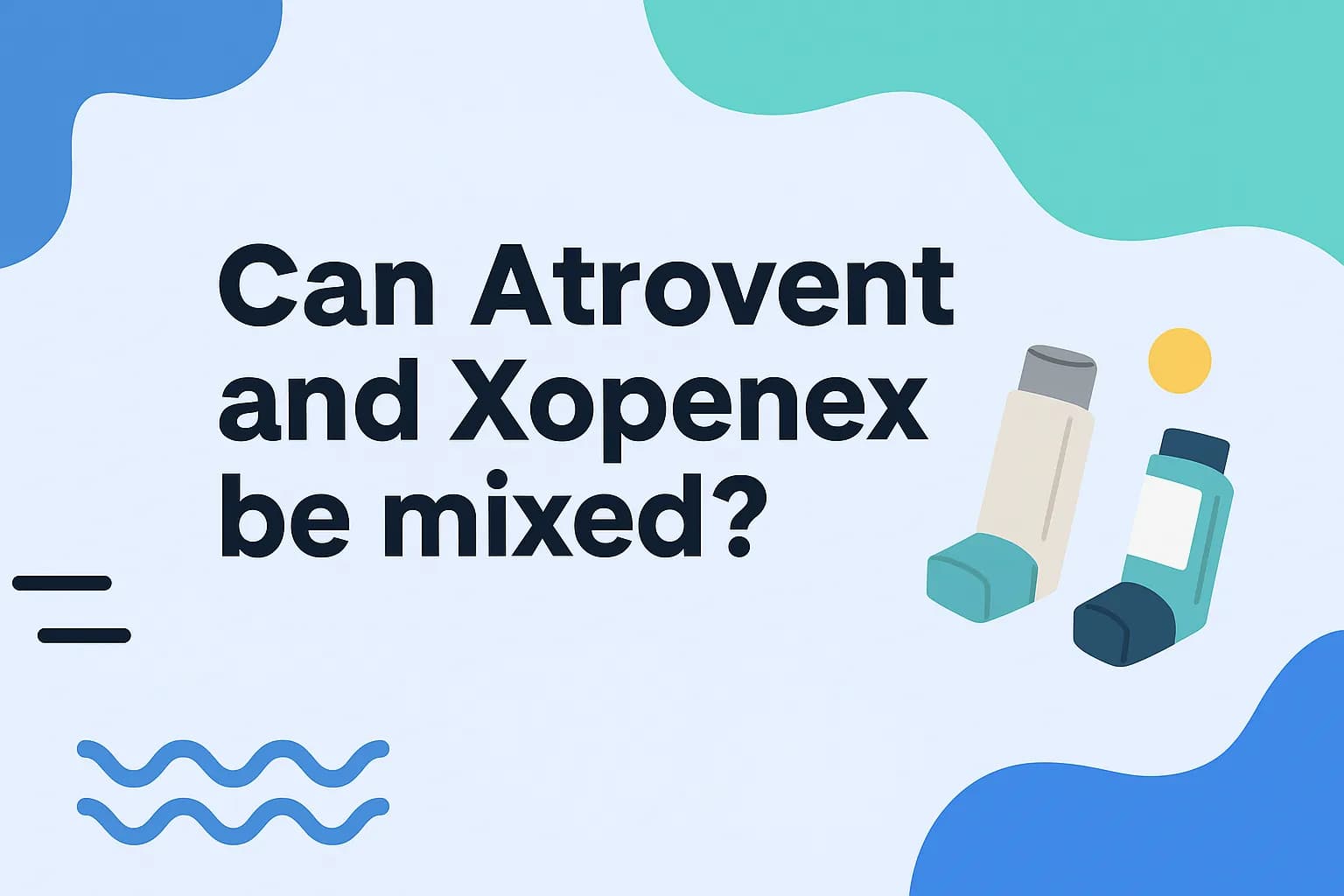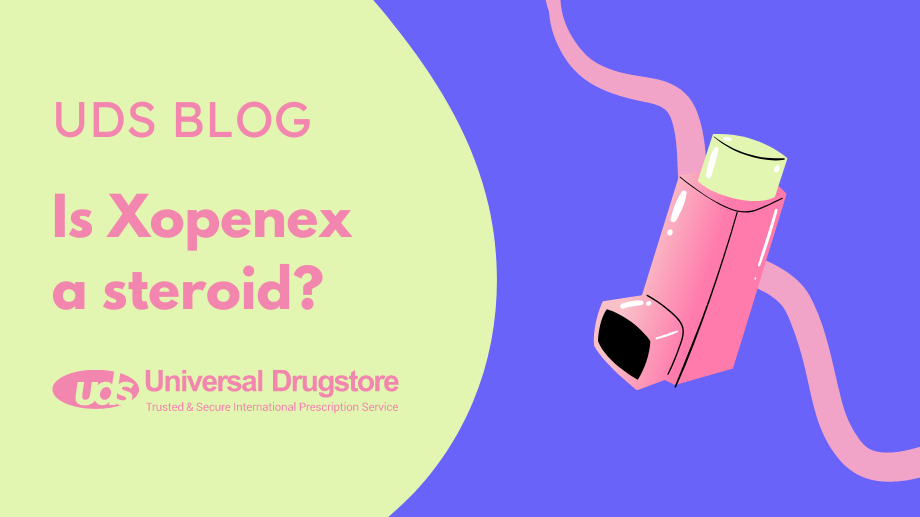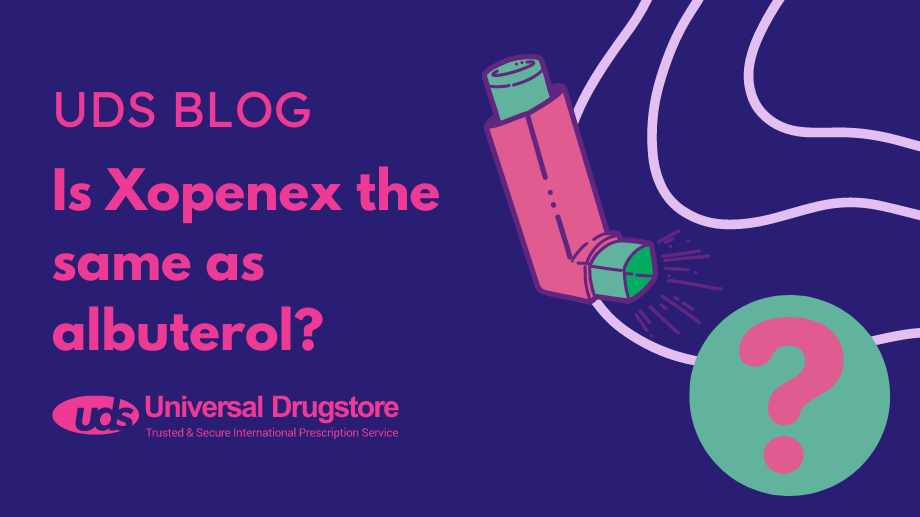What is Xopenex used for?
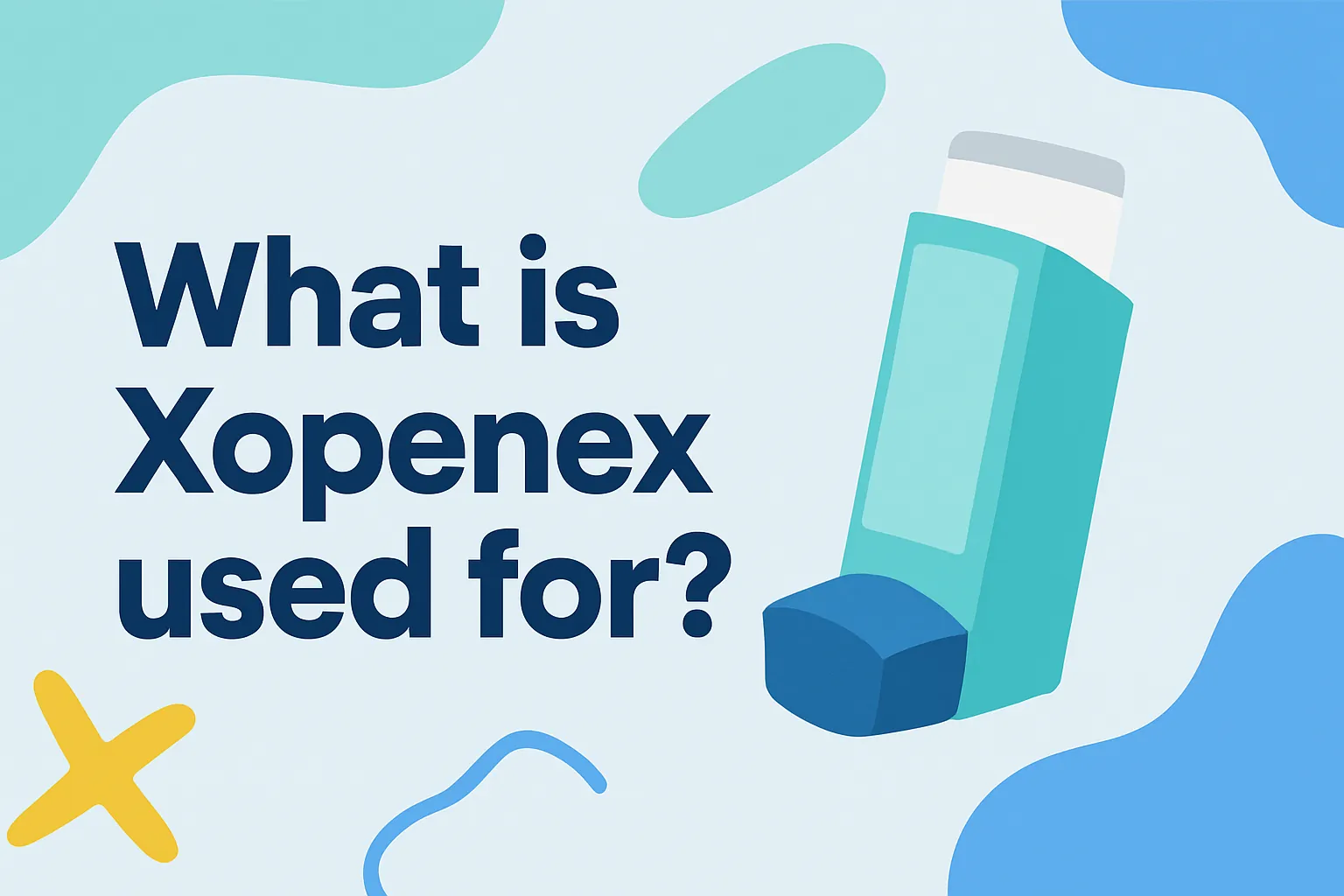
Xopenex is the brand name for a medication that contains the active ingredient levalbuterol. Levalbuterol is a bronchodilator, and it is primarily used to treat and prevent bronchospasm (constriction of your airways) in reversible obstructive airway disease, which includes asthma, certain breathing problems related to allergies, and chronic obstructive pulmonary disease (COPD). COPD includes conditions such as chronic emphysema and bronchitis.
Bronchodilators work by relaxing the muscles in the airways, which helps to open up your air passages so you can breathe easier. Xopenex is often prescribed to improve airflow in your lungs and relieve asthma symptoms such as wheezing, shortness of breath, and coughing.
Xopenex is available as a liquid inhalation solution that’s taken using a nebulizer. It also comes as an aerosol inhaled into your lungs via a metered-dose inhaler (MDI) under the brand name Xopenex HFA. Each actuation (inhalation) from the inhaler gives 59 mcg of Xopenex HFA, which equals 45 mcg of levalbuterol. It is sometimes referred to as a quick relief or rescue inhaler.
Xopenex FAQs
What are the side effects of Xopenex?
The most common side effects of Xopenex seen in clinical trials include:
- Headache
- Viral infection
- Sore throat
- Runny nose
- Tremor
- Dizziness
Other possible side effects of Xopenex include:
- Nervousness
- Body pain
- Chest pain
- Cough
- Dry mouth
- Hoarseness
Rarely, Xopenex may cause serious side effects such as:
- Serious, life-threatening allergic reactions, including anaphylaxis.
Symptoms of anaphylaxis may include hives (raised red patches on your skin), skin rash, swelling of your face, lips, tongue, or throat, and shortness of breath. Seek immediate medical attention if you experience any symptoms of a serious allergic reaction.
- Worsening asthma symptoms
Although rare, Xopenex HFA can sometimes cause a paradoxical bronchospasm which can lead to trouble breathing, cough, wheezing, and chest discomfort. If you are having a hard time breathing right after using Xopenex, get medical help right away.
- Heart problems
Xopenex can cause an increase in your blood pressure, heart rate, and an irregular heartbeat. This does not typically occur if take the recommended dose of this medication.
If you have heart problems such as high blood pressure, you may need to monitor your heart rate and blood pressure closely while taking Xopenex. Notify your healthcare provider right away if you experience dizziness, tiredness, tremors, increased heart rate, or weakness after using this medication.
- Low potassium levels
Xopenex can cause the potassium levels in your blood to drop dangerously low, especially if you use more than you are prescribed or take it with diuretics.
Symptoms of low potassium include tiredness, weakness, muscle cramps or spasms, a racing heart, and a “pins and needles” feeling in your hands and feet.
These are not all of the possible adverse events of Xopenex. You should always seek medical advice from a healthcare professional for any questions or concerns about your medical condition or treatment. You should also read all the patient information, including your Medication Guide that comes with Xopenex. You can report side effects to the FDA at 1-800-FDA-1088 or www.fda.gov/medwatch.
How does Xopenex work?
The active ingredient in Xopenex is levalbuterol tartrate for the HFA inhaler and levalbuterol hydrochloride for the nebulizer solution. Both forms of levalbuterol are short-acting beta-agonists. It helps relax the muscles in your lungs to open up your airways, making it easier for you to breathe.
How should you use Xopenex HFA?
To use the Xopenex HFA inhaler:
- You may need to prime your inhaler if it is the first time you are using it or if you haven’t used it for 3 days in a row. See the instructions that came with your inhaler on how to prime it.
- Take the cap off the mouthpiece of the actuator. You should shake the canister for at least 5 seconds before each spray.
- Breathe out fully to push as much air out of your lungs as you can. Put the mouthpiece into your mouth and close your lips around it. Breathe in deeply and slowly while pushing down on the center of the targeting rings on the canister.
- Take the mouthpiece out of your mouth. Close your mouth and hold your breath for 10 seconds, then breathe out slowly.
- If you need another inhalation, wait at least 1 minute before using it again. Shake the inhaler again and repeat the previous steps. Put the cap back on right after using it.
- You should clean your inhaler once a week. Remove the canister and take the cap off of the mouthpiece. Then place the actuator under the faucet and run warm water for at least 30 seconds through it. Shake out as much water as you can and allow the parts to completely air dry before putting the canister back in.
- You should store your Xopenex HFA inhaler with the mouthpiece down at room temperature away from heat, sunlight, or freezing temperatures.
Shop Medications
How should you use Xopenex inhalation solution
To use Xopenex levalbuterol inhalation solution for the nebulizer:
- Open the foil pouch and only remove one vial. The rest of the vials should be kept in the foil pouch until you are ready to use them. Check the solution to be sure it is colorless. If it is not colorless, do not use that vial.
- Twist off the top of the vial and squeeze all of the solution into the nebulizer reservoir.
- Connect the nebulizer reservoir to the mouthpiece or facemask and then connect the nebulizer to the compressor.
- Sit in a comfortable and upright position and place the mouthpiece in your mouth or put on the facemask.
- Turn on the compressor.
- Breathe calmly, evenly, and deeply until mist stops forming in the nebulizer. This will typically take between 5 and 15 minutes.
- Clean the nebulizer according to the manufacturer’s instructions.
What should you tell your healthcare provider before taking Xopenex?
You should not take this medication if you have an allergy to albuterol, levalbuterol, or any of the inactive ingredients in the product’s formulation. You should be sure your healthcare provider is aware of all your medical conditions as they may be contraindications or you may need increased monitoring during treatment, including:
- Heart disease or other heart problems such as high blood pressure, heart failure, fast heart rate, or an irregular heart rhythm.
- Diabetes.
- Seizures.
- Overactive thyroid.
- Kidney disease.
- If you are pregnant or plan to become pregnant. It is not known whether Xopenex is safe to take during pregnancy.
- If you are breastfeeding or plan to breastfeed. It is not known whether Xopenex passes into breast milk or the effects it may have on your breastfed infant or milk production.
Are there any drug interactions with Xopenex?
When Xopenex is taken with other prescription drugs, over-the-counter medications, vitamins, herbal products, and supplements, it may change how they work or increase the risk of side effects. Tell your healthcare provider about all your current medications, including:
- Other short-acting asthma medications such as albuterol. They can increase your risk of heart-related side effects.
- Diuretics. Taking diuretics, especially non-potassium-sparing ones may cause you to have low potassium levels.
- Beta-blockers. Taking beta-blockers with Xopenex can decrease its effectiveness in treating your breathing problems.
- Digoxin. Using Xopenex with digoxin may decrease the level of digoxin in your body and make digoxin less effective in treating your condition.
- Certain antidepressants such as monoamine oxidase inhibitors (MAOIs) or tricyclic antidepressants (TCAs). If you’ve taken any of these antidepressants within 2 weeks of using Xopenex, you will be at an increased risk of heart-related side effects.
This list is not complete and many other drugs may interact with Xopenex.
What is the dosage for Xopenex?
Your dose of Xopenex will be determined by your healthcare provider based on the condition being treated and which dosage form you are using.
Xopenex HFA:
- Adults and pediatric patients 4 years of age and older will typically use 1 to 2 inhalations every 4 to 6 hours as directed.
Xopenex Inhalation Solution:
- For children 6 to 11 years of age, the recommended dosage is 0.31 mg three times a day (every 8 hours). Routine dosing should not exceed 0.63 mg three times a day.
- For adults and adolescents 12 years of age and older, the recommended starting dosage is 0.63 three times a day, (every 6 to 8 hours). If you need more symptom control, the dose can be increased to 1.25 mg three times a day.
Is Xopenex a steroid?
No, Xopenex HFA is not a steroid. It is considered a short-acting beta-agonist (SABA). Your healthcare provider may prescribe an inhaled steroid for you to use along with Xopenex HFA. The inhaled steroid should be used every day as a maintenance medication while Xopenex is only used when you are having sudden breathing problems.
Why use Xopenex instead of albuterol?
Albuterol and Xopenex are both short-acting beta-agonists (SABAs) that are used to help treat sudden breathing problems. Xopenex was initially marketed as more effective and better tolerated (causes less increase in your heart rate) than albuterol, but data suggests that both have similar effects on heart rate. Both medications are similarly effective and tolerated. They both have generics available, although albuterol tends to be less expensive. Therefore, albuterol should generally be used as a first-line therapy to treat sudden breathing problems. Xopenex should be reserved for patients who cannot tolerate albuterol or if it does not work well for them.
What is Xopenex typically prescribed for?
Xopenex HFA is used for the prevention or treatment of bronchospasm in adults and pediatric patients 4 years of age and older with reversible obstructive airway disease.
Xopenex Inhalation Solution is used for the same indication but is only approved for adults and pediatric patients 6 years of age and older.
Related Medications
- ProAir HFA (albuterol)
- Proair RespiClick (albuterol)
- Ventolin HFA (albuterol)
- Albuterol CFC Free (albuterol)
- Duoneb (ipratropium/albuterol)
